A garden filled with vibrant butterflies is like a living painting—colorful, ever‑moving, full of life. To invite more of these enchanting insects into your outdoors, planting the right flowering shrubs is one of the best strategies. Butterflies are attracted to nectar, shelter, and host plants (for laying eggs), and many flowering shrubs offer combinations of these. Here are eight excellent flowering shrubs that are especially butterfly‑friendly, along with tips on planting, care, and garden design to maximize attraction.
Why Shrubs Are Great Butterfly Magnets
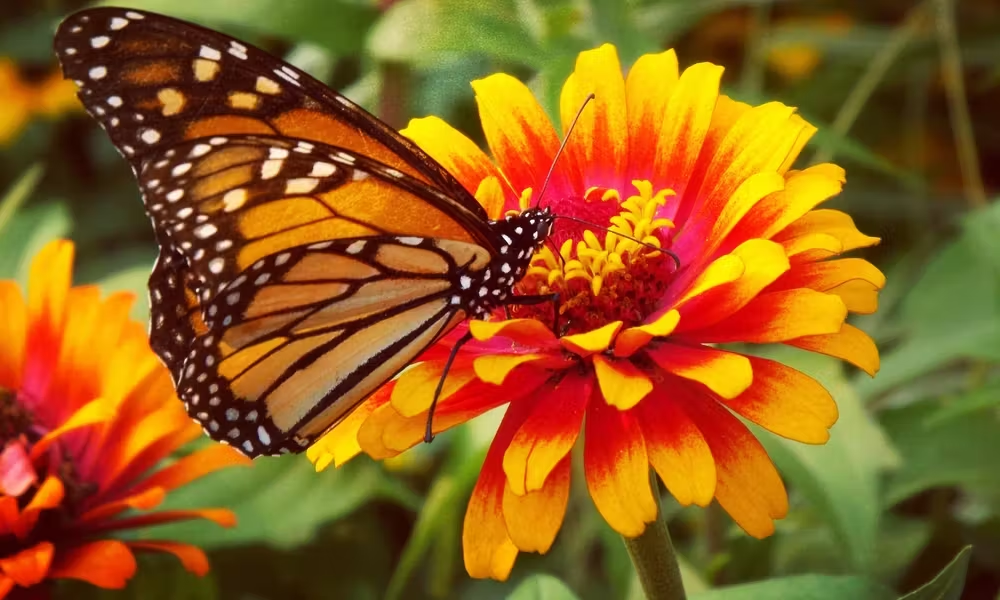
Before the plant list, let’s quickly understand what butterflies look for, and why shrubs are ideal:
- Abundant flowers / nectar: Shrubs tend to produce clusters of blossoms over long periods, giving sustained food sources.
- Shelter & structure: Shrubs provide protection from wind, perches for basking, places to rest.
- Host plants or nearby host plants: While many shrubs aren’t themselves larval hosts, they can be planted alongside host plants or attract butterflies that use nearby plants.
- Varied bloom times: Having shrubs that flower in different seasons ensures there’s always something in bloom, keeping butterflies coming throughout the year.
Shrubs hit that sweet spot—they’re bigger than annuals so they have longer lifespan and structure, yet many are manageable in size for most gardens.
The 8 Shrubs Butterflies Love
Here are eight shrubs that are attractive, relatively easy to grow (in many temperate and subtropical climates), and especially good for butterflies. After each, I’ll include strengths, things to watch, ideal conditions, and planting/care tips.
1. Buddleja davidii (Butterfly Bush)
Why butterflies love it:
- Large, fragrant flower panicles, often in purple, pink, white, or other colors. High in nectar.
- Flowers for a long season (summer into autumn in many zones).
Strengths & limitations:
- Fast growing and showy.
- Some cultivars can be invasive in certain climates; frequent deadheading helps control spread.
- Needs good sun and well‑drained soil.
Ideal growing conditions & care:
- Full sun (6+ hours per day).
- Soil: moderately fertile, good drainage; avoid waterlogging.
- Prune in late winter or early spring to encourage fresh growth and abundant flowering.
- Deadhead spent blooms to prolong flowering and reduce seeding.
2. Lantana camara (Lantana Shrub)
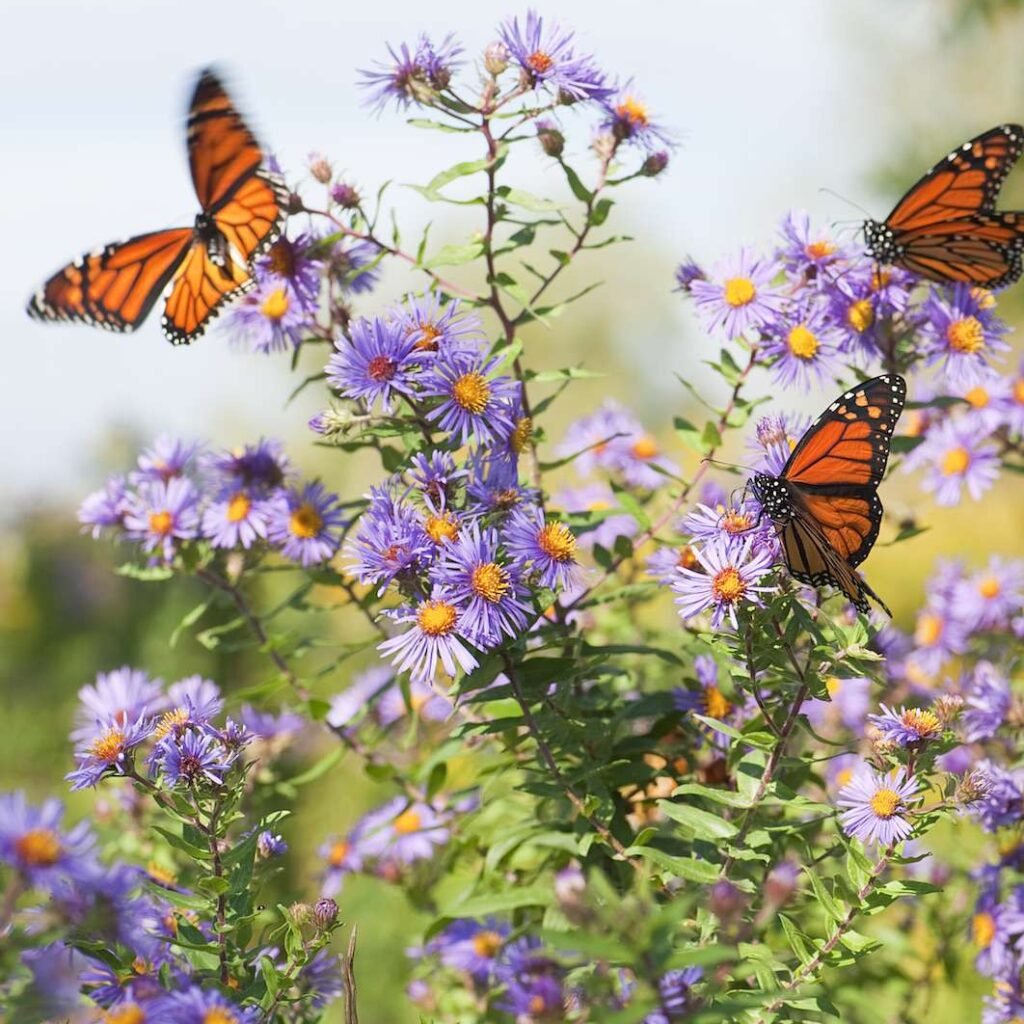
Why butterflies love it:
- Tiny clustered flowers that form flat or rounded heads, often multicolored. Extremely attractive to butterflies because they can land and feed easily.
- Continuous flowering in warm weather.
Strengths & limitations:
- Tolerates heat, drought, poor soil.
- In colder climates, may die back in winter or need protection.
- Some species/varieties can be invasive; tread carefully.
Ideal growing conditions & care:
- Full sun to light shade.
- Well‑drained soil; mulch to help with heat retention in dry periods.
- Prune back after heavy flowering to keep shape and promote new blossoms.
- Water regularly when young; once established, more forgiving of dryness.
3. Hibiscus rosa‑sinensis (Tropical Hibiscus Shrub)
Why butterflies love it:
- Large showy blossoms; bright colors attract butterflies, hummingbirds, and pollinators.
- Tropical feel; flowers almost year‑round in warm climates.
Strengths & limitations:
- Needs warmth; frost‑sensitive.
- Requires more water and nutrient input compared to some drought‑tolerant shrubs.
Ideal growing conditions & care:
- Full or strong sun; some varieties tolerate partial shade.
- Rich, well‑drained soil with good organic content.
- Fertilize during growing season; ensure adequate water (especially in dry spells).
- Remove spent flowers (deadhead) and prune lightly to maintain shape and encourage bushiness.
4. Abelia x grandiflora (Glossy Abelia)
Why butterflies love it:
- Fragrant, tubular blooms often in shades of white or pink that are ideal for butterflies’ proboscis. The fragrance adds another attractant.
- Long bloom season (late spring through autumn in many areas).
Strengths & limitations:
- Semi‑evergreen in mild climates; may lose leaves or die back some in colder winters.
- More tolerant of various soils, but needs good drainage.
Ideal growing conditions & care:
- Sun to partial shade.
- Soil: moderately fertile, well draining.
- Prune lightly after spring or early summer bloom to shape and remove old wood.
- Mulch to retain soil moisture and reduce weeds.
5. Salvia (Shrubby Varieties such as Salvia leucantha, Salvia greggii, etc.)
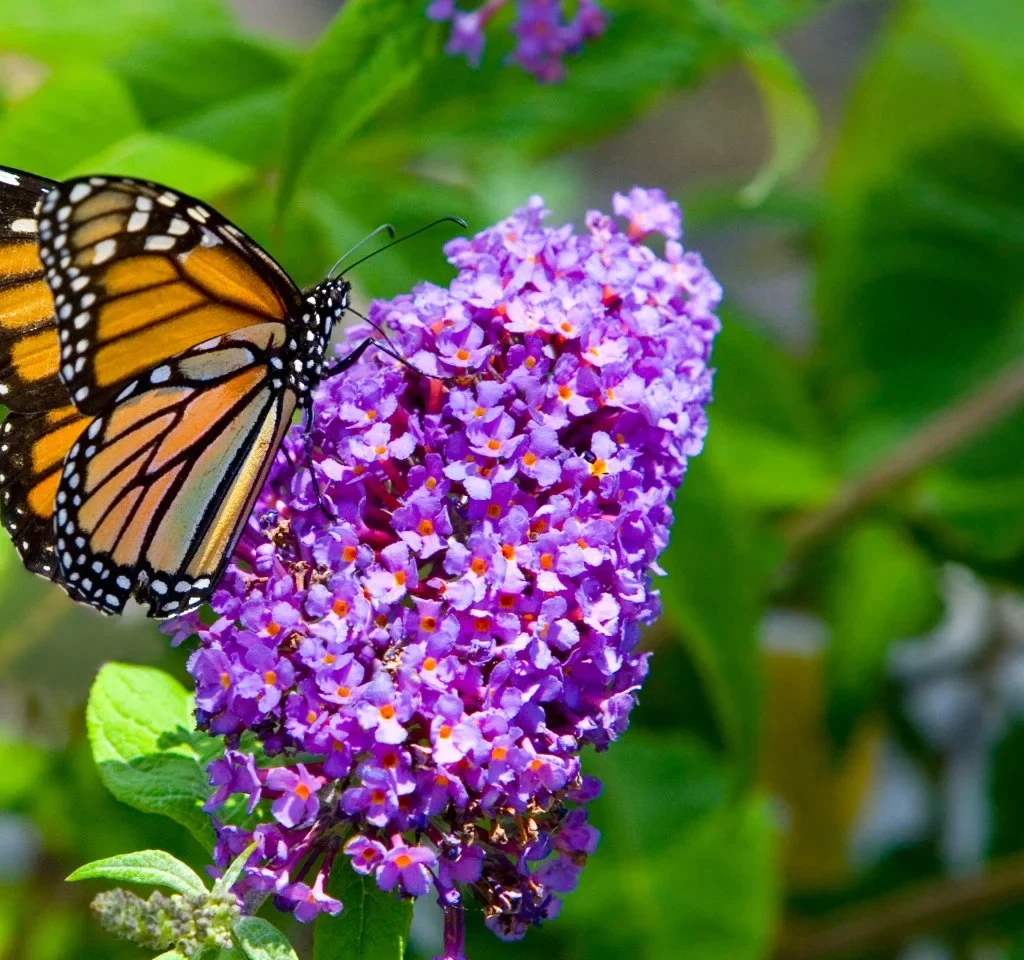
Why butterflies love it:
- Flower spikes that are nectar rich. Butterflies appreciate tubular florets.
- Wild, natural look; blooms over extended periods depending on variety.
Strengths & limitations:
- Many salvias are drought tolerant; good choices for less water.
- Some are frost sensitive; cut back damaged wood in spring.
Ideal growing conditions & care:
- Full sun preferred; some partial shade ok.
- Good drainage; avoid overly wet soil.
- Prune after bloom to tidy up; sometimes cut back to prompt new growth.
- Deadhead as needed to extend bloom.
6. Rhododendron / Azalea Shrubs
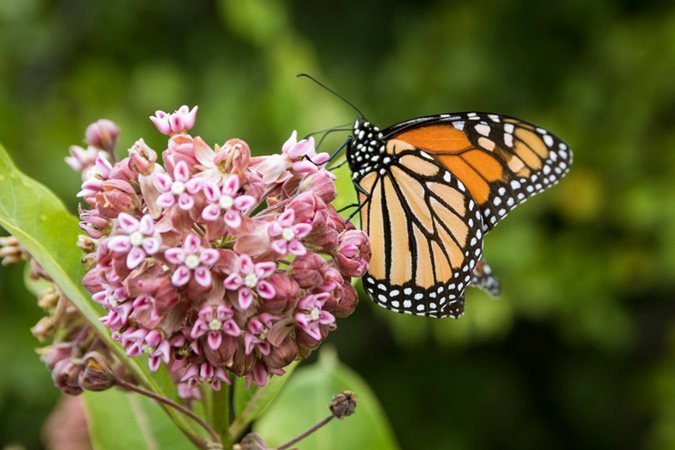
Why butterflies love it:
- Showy spring blooms in many colors. Early season nectar helps butterflies emerging from overwintering.
- Dense foliage provides shelter.
Strengths & limitations:
- Prefer acidic soil.
- Need shading from hottest sun in warm climates.
- Some require more moisture and protection from harsh conditions.
Ideal growing conditions & care:
- Partial shade—morning sun, afternoon shade works well.
- Soil: rich in organic matter, well‑drained, acidic (pH around 5.5‑6.5).
- Mulch to conserve moisture.
- Prune after blooming to shape and remove spent flower heads.
7. Pentas lanceolata (Egyptian Starcluster) – Shrub Form or Large Perennial/Shrubby Border
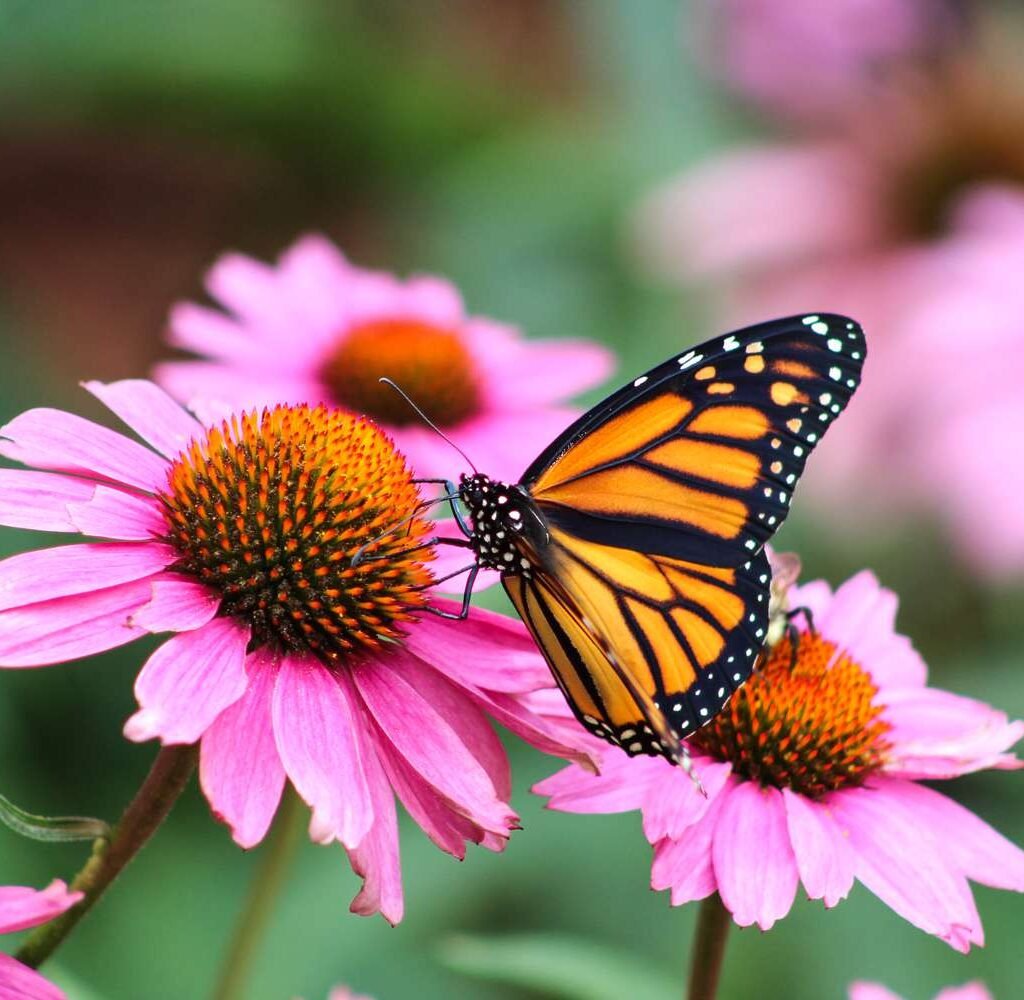
Why butterflies love it:
- Clusters of star‑shaped flowers, often vivid red, pink, purple, or white. Very attractive to many butterfly species.
- Flowers for long periods in warm climates.
Strengths & limitations:
- Needs warmth; may perish or be cut back in cold winters.
- Needs regular watering and good fertility.
Ideal growing conditions & care:
- Full to partial sun.
- Rich, well‑drained soil.
- Deadhead to prolong blooms.
- Fertilize lightly during growing season.
8. Lagerstroemia indica (Crape Myrtle Shrub / Small Tree)
Why butterflies love it:
- Long summer flowering—panicles of crape flowers in pink, red, purple, white. The blossoms attract a variety of pollinators including butterflies.
- Attractive bark, and foliage that can turn color in autumn—adds multi‑season interest.
Strengths & limitations:
- Needs sun to flower profusely.
- Some varieties get larger; pick dwarf or smaller cultivars if space is limited.
- Tolerant of heat; moderate drought once established.
Ideal growing conditions & care:
- Full sun (strong flowering).
- Soil: well‑drained, moderately fertile.
- Prune in late winter or early spring to shape and remove dead wood.
- Mulch and water to help settle young plants; once mature they are less needy.
Planting and Care Tips to Maximize Butterfly Attraction
To make the most of these shrubs, here are best practices—and design strategies—to ensure your garden becomes a butterfly haven.
Choose a Variety of Bloom Times
- Plant shrubs that flower in spring, summer, and fall so there’s always nectar available.
- Example combo: Rhododendron/Azalea (spring) + Buddleja / Lantana / Salvia (summer) + Abelia / Crape Myrtle (late summer into fall).
Provide Shelter & Sunlight
- Butterflies are cold‑blooded; they need sunny spots to bask and warm themselves. So plant nectar‑rich shrubs in sunny or partly sunny areas.
- At the same time, shrubs act as windbreaks—wind can reduce butterfly activity. Creating wind‑protected zones helps.
Avoid Pesticides, Especially Broad‑Spectrum
- Pesticides kill more than pests; harsh sprays eliminate helpful insects, including butterflies or their caterpillars.
- If needed, use targeted or organic pest control. Inspect leaves by hand.
- Some shrubs, aside from feeding butterflies, can support caterpillars of certain butterfly species; leave host plants nearby if possible (e.g. milkweed, nettles, etc.).
Soil & Water Management
- Good drainage is essential—many butterfly‑loving shrubs don’t like “wet feet.”
- Regular watering, especially when establishing. Mulching helps maintain soil moisture and keeps roots cooler.
- Organic matter (compost) improves soil structure and nutrients for stronger flowering.
Deadheading & Pruning
- Deadheading (removing spent flowers) encourages more blooms and prolongs the flowering season in many shrubs (Lantana, Buddleja, Salvia, Pentas).
- Prune for shape and health—remove dead wood, improve air circulation.
- For shrubs that bloom on old wood (like Azaleas / Rhododendrons), prune immediately after flowering to avoid cutting off next year’s flower buds.
Plant in Clusters & Use Color Strategically
- Butterflies are attracted to massed color; planting several of the same shrub together or grouping shrubs with similar-colored flowers magnifies visual impact.
- Bright colors like purples, reds, oranges, pinks are especially appealing. White also helps in twilight.
Add Butterfly “Extras”
- Water source: A shallow dish with pebbles, or a damp patch, gives butterflies a place to land and drink.
- Sunbathing spots: Flat stones or bare ground where they can absorb heat.
- Host plants: For caterpillars—e.g. milkweed, parsley, fennel, or specific host species depending on butterfly types in your area. Plant near your flowering shrubs so adult butterflies feel comfortable laying eggs near food for larvae.
Design Ideas: How to Lay Out these Shrubs
Here are a few layout ideas to make your butterfly garden both beautiful and functional:
- Nectar border: Create a sunny border along a fence or walkway using Lantana, Salvia, Buddleja. Behind or interspersed, place taller or semi‑evergreen shrubs like Crape Myrtle or Abelia.
- Mixed shrub/host bed: Combine one or two of the flowering shrubs with host plants for butterfly caterpillars. For example, have Lantana or Pentas flowering and nearby milkweed or citrus (depending on your butterflies).
- Layered planting: Use low shrubs or groundcovers in front (Pentas, Salvia), medium shrubs mid‑height (Lantana, Abelia), and taller shrubs or small trees (Crape Myrtle or tall Buddleja) at the back. This gives depth, visual interest, and vertical variety.
- Containers & edges: If space is limited, Lantana, Salvia, or Pentas in large pots or containers can still attract butterflies. Edges of paths or patios are good spots for fragrant or showy shrubs like Hibiscus or Abelia.
Examples for Different Climate Zones
- Tropical / Subtropical (like many parts of India, Nagpur region): Lantana, Hibiscus, Abelia, Crape Myrtle will generally do very well. Watch for heat stress, ensure enough water in dry spells.
- Temperate climates with cold winters: Choose hardy cultivars or shrubs that die back or are deciduous. For example, Hardy Buddleja, Salvia species suited for low temperatures; protect young plants.
- Dry or semi‑arid gardens: Go for drought‑tolerant shrubs (Lantana, some salvias, certain varieties of Abelia). Mulch well, minimize water stress.
- Shaded gardens: Some shrubs tolerate part shade, such as certain Abelia or Azalea, but for best butterfly attraction you’ll want at least some sun in the day.
Troubleshooting & Common Problems
- Shrubs not flowering: Often due to too much shade, poor soil fertility, or pruning at wrong time (especially late bloomers). Ensure adequate sun, feed lightly, and prune at proper time.
- Leaves or blooms damaged: Pests (aphids, caterpillars), fungal disease (especially in humid climates with poor air flow). Monitor regularly, prune for airflow, use organic control.
- Shrubs getting leggy or sprawling: If a shrub is too tall or open at bottom, prune back to encourage bushier growth. Deadhead spent blooms to prevent energy waste.
- Winter dieback: For less hardy shrubs planted outside their ideal zone, protect roots, mulch, or move containers indoors.
Summary & Encouragement
Butterflies are not only beautiful—they’re indicators of a healthy ecosystem. By planting the right shrubs, giving them good conditions, and designing your garden with butterflies in mind, you can enjoy fluttering wings, bright colors, and seasons of flowering surprise.
Here are the key takeaways:
- Choose shrubs rich in nectar with long bloom periods.
- Provide sun, shelter, and avoid chemicals.
- Include variety in bloom times and color.
- Combine flowering shrubs with host plants, water features, and basking spots.
- Maintain soil health, prune appropriately, and monitor pests.





